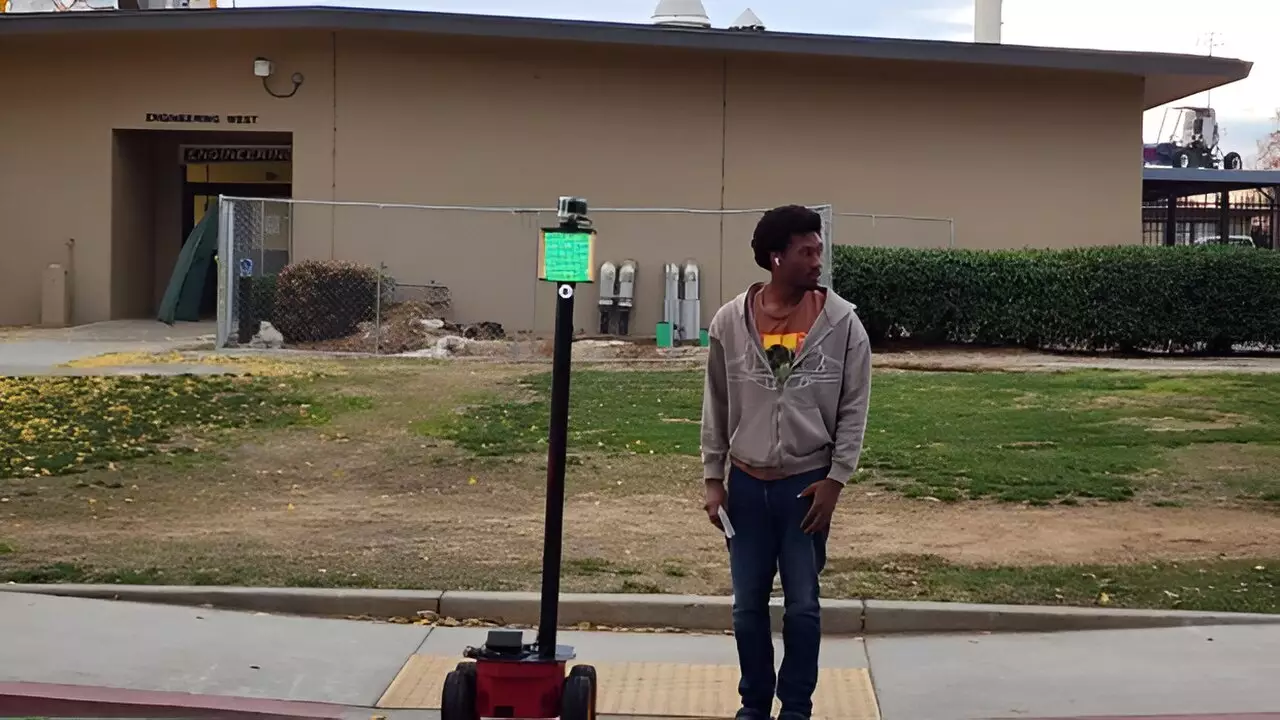Imagine a world where crossing guards are replaced by robots. This may seem like a scene straight out of a sci-fi movie, but with the introduction of CrossBot, this futuristic concept is becoming a reality. Created by Hovannes Kulhandjian, an associate professor in electrical and computer engineering at Fresno State, CrossBot is a prototype robot designed to protect kids in crosswalks and potentially reduce the crossing guard shortage in the Bay Area.
Unlike the talkative and guitar-playing robots we see in movies, CrossBot is a simple yet powerful device with a 360-degree view of its environment. Equipped with sensors, including Lidar, a microphone, radar, video camera capabilities, a speaker system, and advanced algorithms, CrossBot is a sophisticated solution to the issue of crossing guard shortages. In a demonstration video, the robot is seen squatting at the curb, then rolling out into the crosswalk when traffic is clear, signaling to kids when it’s safe to cross.
While the idea of robotic crossing guards may seem innovative, not every parent is on board with the concept. Some express concerns about the reliability of robots compared to human crossing guards who know the children personally and can keep a watchful eye on them. The fear of malfunctions or security breaches is a valid consideration when it comes to implementing such technology in real-world scenarios.
Angela Roberts, a mother of two young daughters, also shares her apprehension about the turnover of school crossing guards and the need for a more consistent solution. She acknowledges the challenges of hiring and retaining crossing guards and sees the potential for robotic crossing guards to fill this gap. The shortage of crossing guards in various school districts further adds to the urgency of finding alternative solutions to ensure the safety of children.
With pedestrian-related accidents being a significant cause of concern, especially for children, the demand for safer crosswalks is evident. The statistics on pedestrian deaths in the United States highlight the pressing need for effective measures to protect vulnerable road users. The increasing adoption of robotics in various industries signifies a shift towards automation and efficiency in addressing complex challenges.
Robots are no longer limited to factory floors or warehouses; they are now being utilized in diverse settings to streamline processes and enhance safety measures. The global robotics market is projected to reach billions of dollars in value, indicating a growing trend towards incorporating robotics into daily operations. In this context, CrossBot stands as a potential solution to bridge the gap in crossing guard shortages while complementing human efforts.
As the creator of CrossBot, Hovannes Kulhandjian emphasizes that the robot is designed to enhance human efforts rather than replace them entirely. The intention behind CrossBot is to provide an additional layer of safety and reliability in situations where human resources are limited or unavailable. While there may be concerns about the long-term impact of robotic crossing guards, the evolving landscape of technology and automation suggests that innovative solutions like CrossBot could become more prevalent in the future.
The concept of robotic crossing guards presents both opportunities and challenges in addressing the pressing issue of crossing guard shortages. While the idea may be met with skepticism initially, the potential benefits of increased safety and efficiency cannot be overlooked. As technology continues to advance, solutions like CrossBot may pave the way for a new era of road safety and automation in the Bay Area and beyond.


Leave a Reply